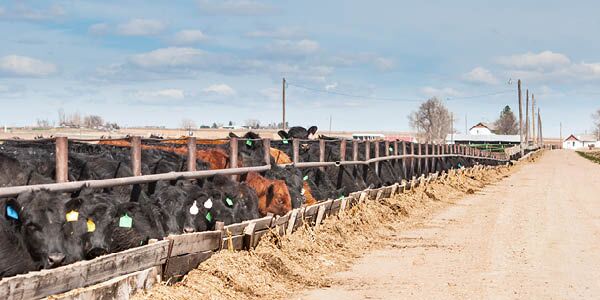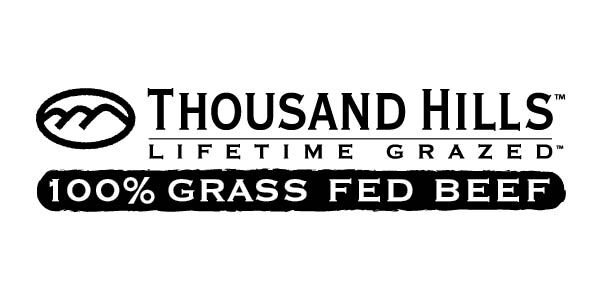


Sign-up for {N}power to get exclusive discounts, newsletters, members-only features, and more!

Close your eyes and imagine a feedlot full of cattle being fed GMO corn, soy, or spent GMO distillers’ grains. Perhaps these cattle are even being fed antibiotics to help speed their growth. Would you be amazed to hear that the USDA would allow these cattle to be called grass fed? Increased consumer demand for products labelled as “grass fed” or “pasture raised” has resulted in more and more products making their way into the marketplace—despite a lack of transparency for the consumer about what is actually meant by the label term grass fed. In fact, there seems to be a huge amount of discordance between what the consumer expects when they buy grass fed beef and what the USDA actually allows to qualify as “grass fed” beef.

An animal’s diet has a profound impact on the nutrient content of products derived from that animal. Beef from cows allowed to graze and forage, often termed grass fed, has a healthier fatty acid profile. While conventional beef (raised on corn and soy) has an omega-6:omega-3 fatty acid ratio of around 23:1, grass fed beef ends up having a 2:1 ratio—much closer to what is thought to be ideal.1 Having a healthy omega-6 to omega-3 balance supports overall health, including cardiovascular health and healthy weight maintenance; therefore, choosing food sources that have an optimal ratio is thought to be better for our health.2 In addition to the omega-6:omega-3 ratio, grass fed beef is higher in other nutrients including zinc, CoQ10, L-carnitine, and vitamins A and E.3 Grass fed beef also contains much higher levels of CLA, a fatty acid that has been shown to reduce body fat and increase muscle mass, as well as enhance the immune system.4
There is no doubt that beef raised in feedlots and fed GMO grains (which are grown in an environmentally damaging fashion) is bad for the environment. However, when it comes to raising cattle on grasses and rangeland, it’s an entirely different story. Managed grazing done in an intelligent and thoughtful fashion actually helps restore the soil and encourages the growth of healthy grasslands. Experts in managed grazing have shown that putting animals back out on the rangeland stimulates the growth of grasses, fertilizes the land, and encourages microbial growth in the soil—ultimately rebuilding healthy soil that is capable of pulling carbon dioxide out of the atmosphere and trapping it.5 In order to properly manage grasslands and prevent overgrazing, animals must be moved in a fashion that mimics the movements of wild herds. What this means is that in order to properly manage these rangelands and pasture, animals need to be moved frequently, and Natural Grocers has chosen several producers of grass fed beef who move their cattle often, sometimes as often as three times per day.
Most of the beef consumed in the United States comes from feedlots, where cattle arrive after spending six months on pasture and grass after being weaned, to be finished for another six months or so on a diet of corn and other grains. Because most cattle start their lives on pasture before going to the feedlots, anyone processing and selling meat from these animals can ask the USDA for permission to call their product “grass fed.”
In order to differentiate what is truly grass fed beef from this less authentic product, consumers interested in truly grass fed beef should look for beef labeled 100% grass fed, as this indicates that these animals were raised on grass for their entire life after they were weaned from their mother. But that’s not all. Amazingly, even products labeled 100% grass fed still have loopholes. The primary loophole is that the USDA has decided to allow beef to be fed spent distillers’ grains and still be considered 100% grass fed. Not only are distillers’ grains an unnatural type of forage for cows to consume, but in order to feed distillers’ grains to cattle, the cows need to be kept in confinement—and this is completely acceptable under the USDA’s definition of 100% grass fed. Lastly, while you expect that grass fed beef is more nutritious than corn fed beef, the feeding of distillers’ grains could completely cancel out these benefits. To ensure your grass-fed beef is not falling prey to these loopholes look for additional terms like non-GMO/no GMOs, no antibiotics, no artificial hormones, no distillers’ grains (also abbreviated as DDGs), no grains and lifetime grazed.
While beef is the predominant red meat in the U.S., meat from other ruminants like bison, sheep, yak, deer, elk, etc., shouldn’t be overlooked. Many of these animals are indigenous to the United States and are particularly suited to a life on pasture in America’s grasslands. To be sure you are getting meat from animals that are truly sustainably and humanely raised, though, look for the same key phrases as you would for beef.
To ensure that your truly grass fed beef came from animals that spent their life on pasture and were managed in ways that actually restore the soil and are good for the environment, choose meat products with our “gold” standard. All gold standard meat from ruminants meets the highest requirements for diet and animal welfare, as do our “bronze” and “silver” standards, but is also raised using regenerative agricultural practices, such as Holistic Planned Grazing or other managed pasture grazing system.
According to many experts in the beef industry, the grass fed beef market is being flooded with beef from South America, New Zealand, and Australia. The problem with this is two-fold: buying these products doesn’t help American family farms or farmers, and because the cost of overseeing overseas producers is prohibitive, no one really knows exactly what sort of grazing practices are being used.
Lastly, grass fed beef has a reputation as being more challenging to cook, but the truth is, it really isn’t rocket science. When you are cooking grass fed steaks, roasts, or grind, make sure not to overcook the meat—but this is true no matter what type of meat you’re cooking. "Grass fed beef will cook slower," says award-winning Chef JD Fratzke. "But I’ve never really treated grass-fed beef that much differently than corn-fed."

Natural Grocers is proud to have partnered with Thousand Hills Cattle Company—a company that takes no shortcuts and uses no GMOs or distillers’ grains in the raising of their 100% grass-fed cattle—for our fresh beef program. Our purchasing team spent a long time searching for a producer who wasn’t taking advantage of any loopholes and met our other strict standards including no antibiotics, no artificial hormones, and no use of growth-promoting drugs, as well as produced all of their beef domestically. Thousand Hills sources its beef from farms throughout the Midwest and Great Plains, meaning that buying these products directly supports American farmers and regenerates American grasslands.
Most people who shop for grass-fed beef are doing so because they want something that is healthier for them, better for the planet, and/or supports small family farms. With Thousand Hills Beef, you’re getting a product that does all three. Thousand Hills products can now be found at your local Natural Grocers and I can tell you from personal experience, it is delicious!



Sign-up for {N}power to get exclusive discounts, newsletters, members-only features, and more!